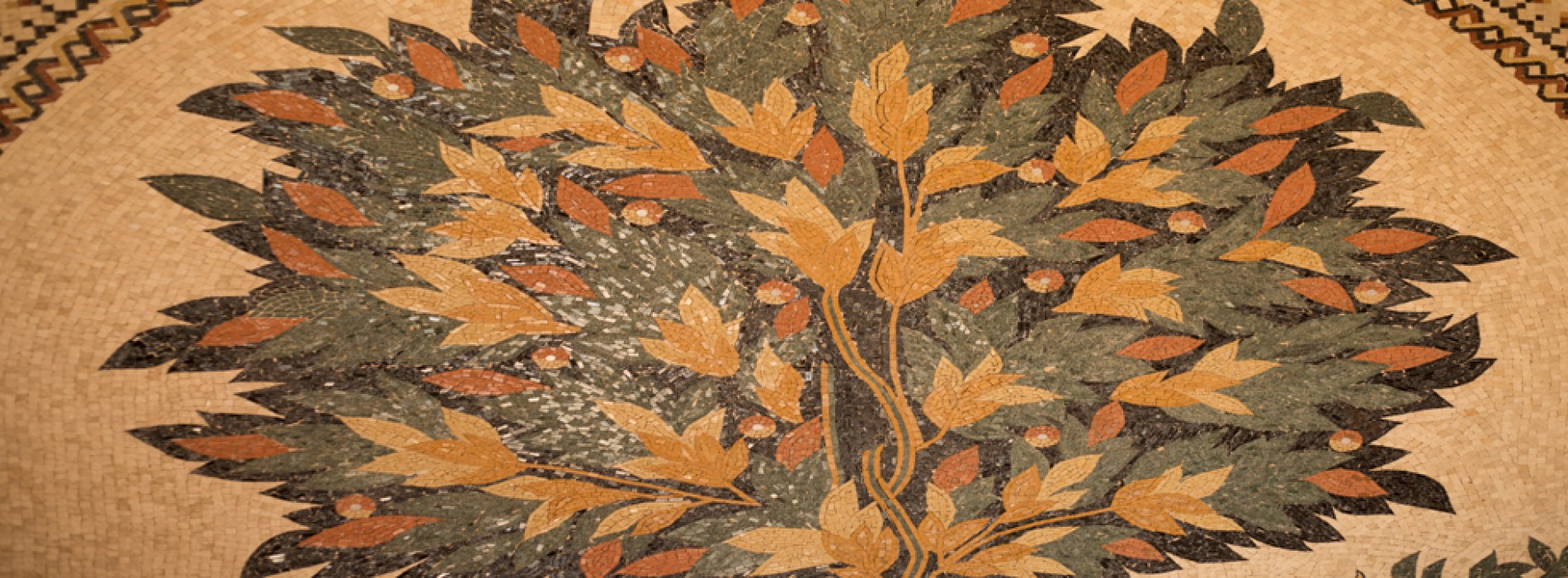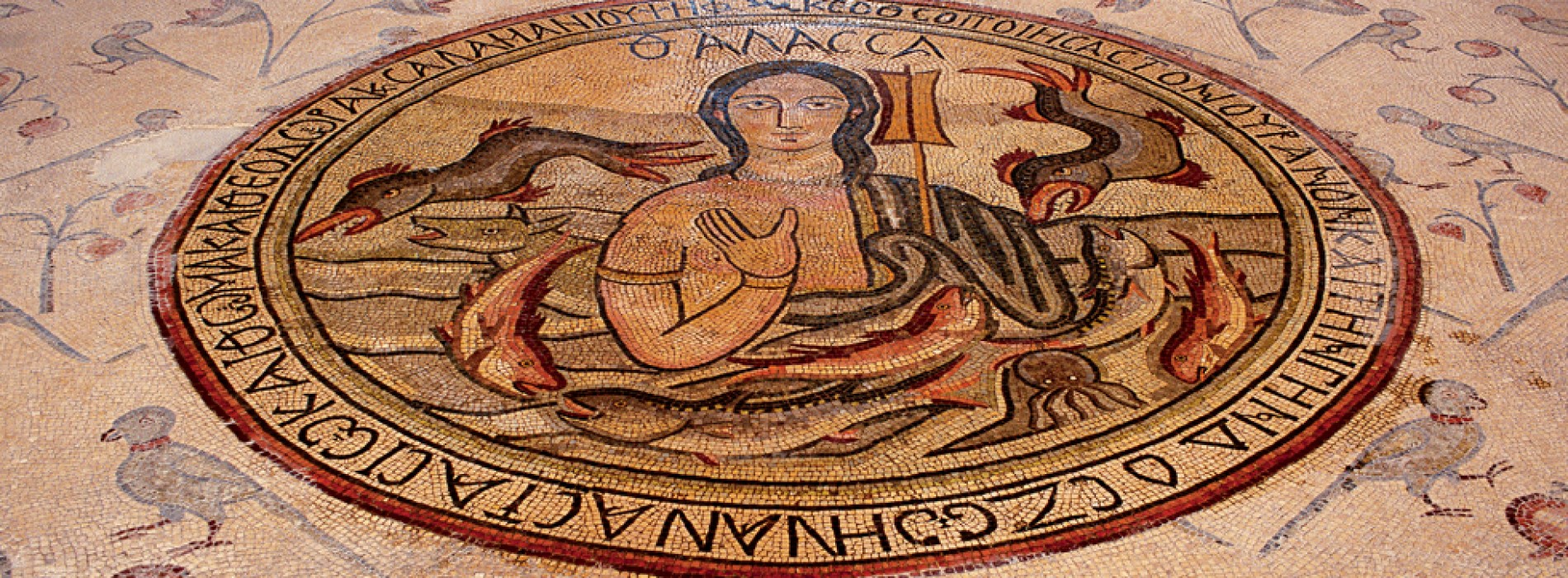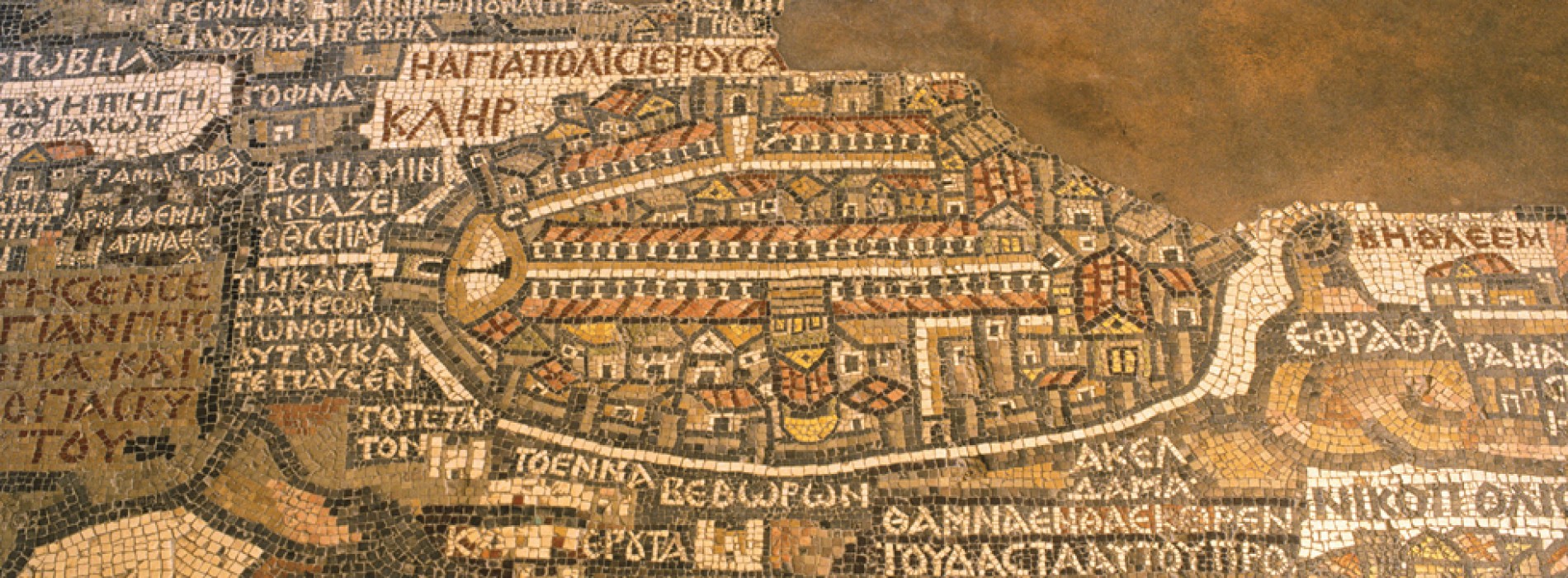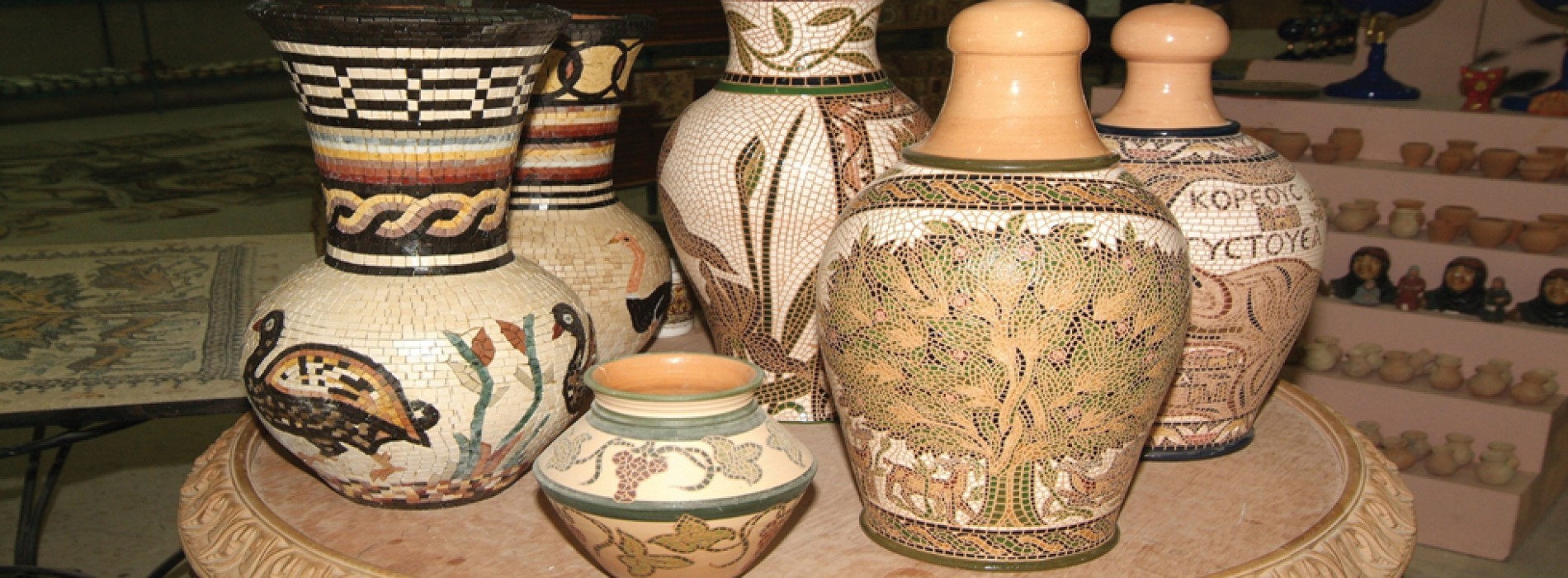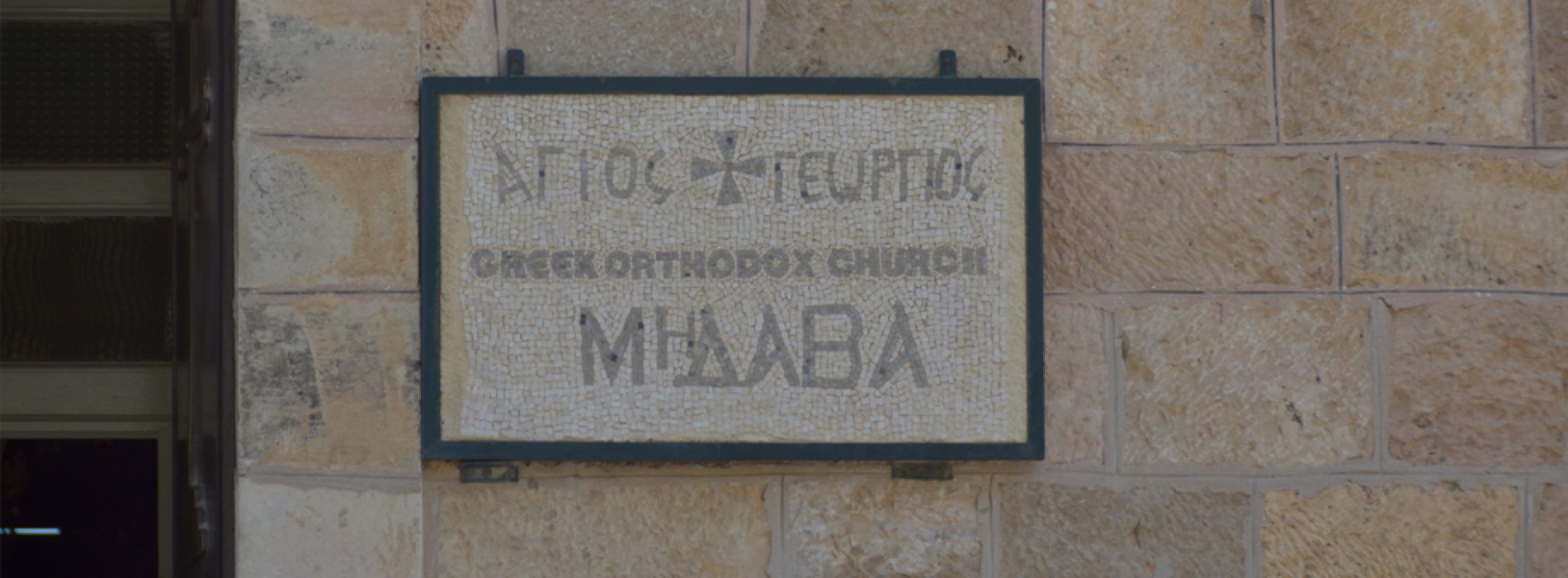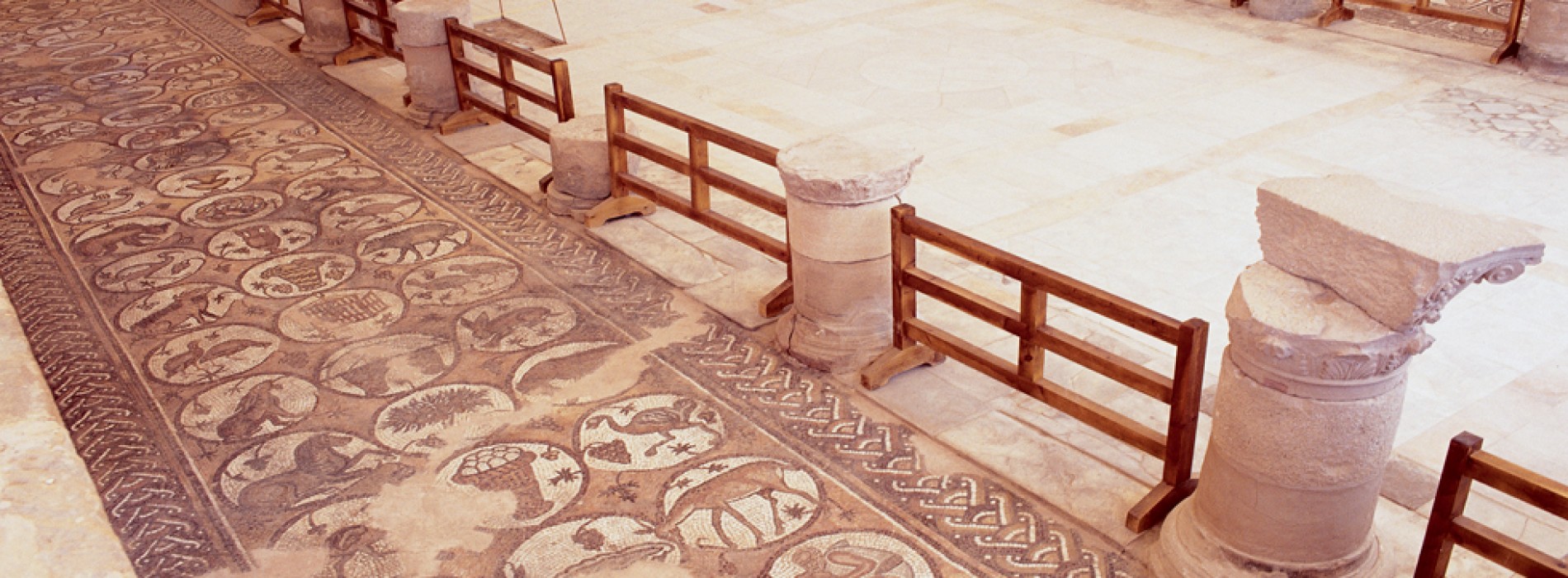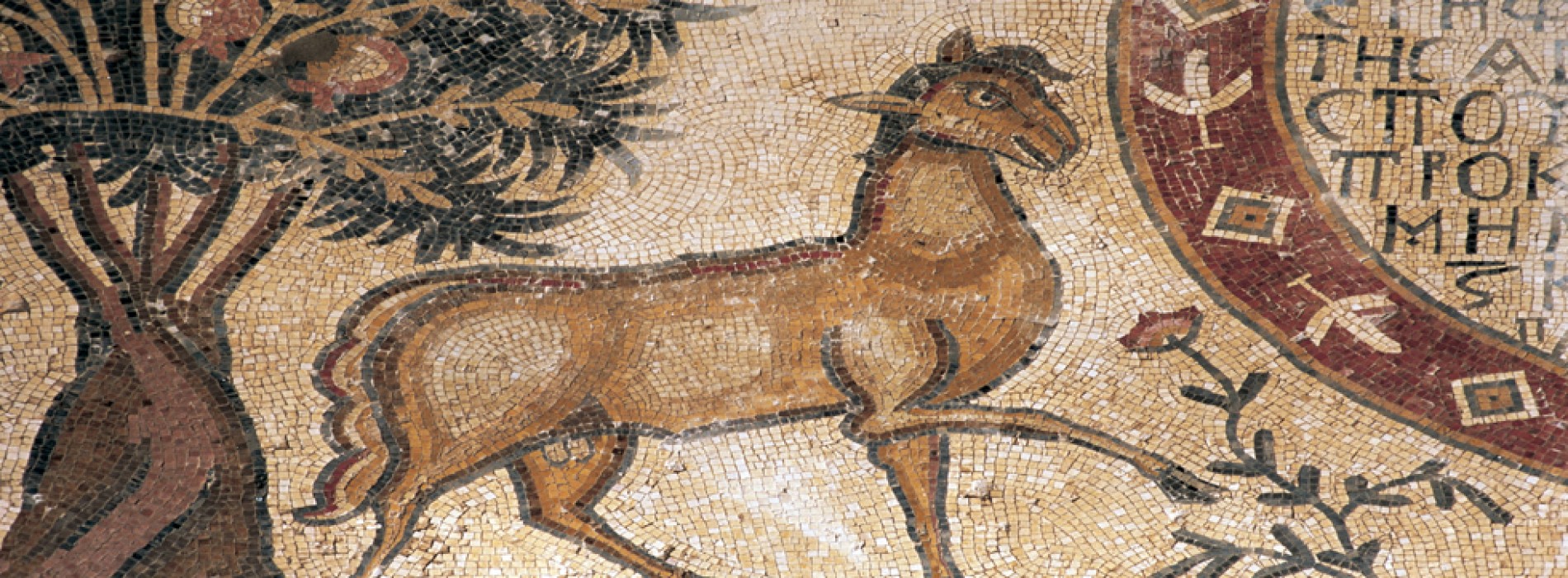Explore Madaba Art- Mosaic
Madaba, “the City of Mosaics”, located in Central Jordan is best known for its spectacular Byzantine and Umayyad mosaics, and is home to the famous 6th century mosaic map of Jerusalem and the Holy Land. With two million pieces of coloured stone, the map depicts hills and valleys, villages and towns as far as the Nile Delta.
The Madaba Mosaic Map covers the floor of the Greek Orthodox Church of St. George. The church was built in 1896 AD, over the remains of a much earlier 6th century Byzantine church. The mosaic panel enclosing the Map was originally around 15.6 X 6m, 94 sq.m., only about a quarter of which is preserved.
In line with Jordan’s commitment to restoring and preserving its mosaic masterpieces, Madaba’s extensive Archaeological Park and Museum complex encompasses the remains of several Byzantine churches, including the outstanding mosaics of the Church of the Virgin and the Hyppolytus Hall, part of a 6th century mansion.
Other mosaic masterpieces found in the Church of the Virgin and the Apostles and the Archaeological Museum, depict a rampant profusion of flowers and plants, birds and fish, animals and exotic beasts, as well as scenes from mythology and everyday pursuits of hunting, fishing and farming. Literally, hundreds of other mosaics from the 5th through the 7th centuries are scattered throughout Madaba’s churches and homes.
Close to the Church of the Virgin is the Madaba Institute for Mosaic Art and Restoration, which operates under the patronage of the Ministry of Tourism. The only project of its kind in the Middle East, the Institute trains artisans in the art of making, repairing and restoring mosaics.
Several neighboring houses built on Byzantine mosaic floors in Madaba were purchased by the Department of Antiquities to form the core of a museum for the city. The site was opened in 1987.
A number of mosaics from Hesban, Ma’in Qastal, and Mount Nebo are on display in the open courtyard of the museum, along with a collection of lonian and Corinthian capitals, and a number of Byzantine collonettes and altars. The museum also houses several collections of pottery, glass from Hellenistic, Roman, Byzantine, and Islamic periods.
An important collection of Islamic pottery and bronze vessels found inside a room of the Umm Al-Walid was conserved at the Institute of Conservation in Geneva and is now on display in Madaba. There is also a collection of silver Ptolemaic coins from Muraba’ at Musa and a collection of gold Umayyad dinars.
Mosaic sites are found surrounding Madaba at Ma’in, Hesban, Siyagha, Mukhayyat, Masuh, Mukawir, Nitel, Jamil, and, most importantly, at Umm Ar-Rasas (ancient Kastron Mefaa) with its fourteen churches, most of which date to the 5th and 6th centuries AD. The most famous, however, is the Church of St. Stephen dated to the Abbasid period (8th century AD).
You might also like
Northeast Frontier Railway introduces new technology to tackle fog
The device weighs 1.5 kg and is carried by the loco pilot at the time of assuming charge of the locomotive. The Northeast Frontier Railway (NFR) has introduced a new
Meluha-The Fern, Mumbai receives three Awards for Excellence in Hospitality Industry
Meluha – The Fern, an ecotel hotel, Mumbai received Three Awards for Excellence at the 13th Hospitality India and Explore the World Annual International Travel awards at Ashok Hotel Convention
StayPleasure launches exclusive short stay online booking portal Pan India
StayPleasure, India’s leading and highly reputed Short Stay online booking Portal is the one to look out for a perfect travel and short stay experience. With a huge network base

